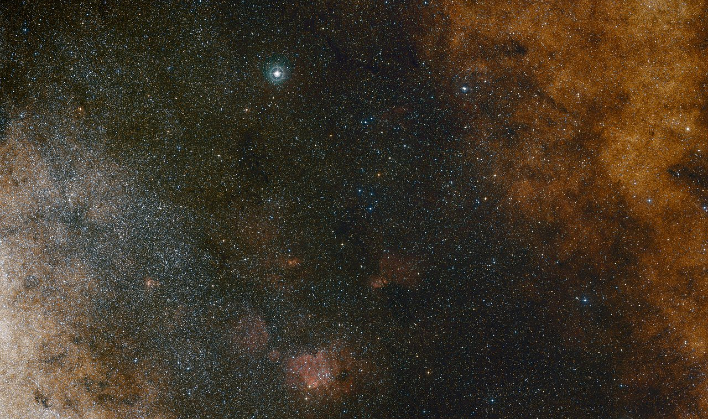VLTI Space Telescope Zooms Deep Into The Milky Way And Here's What It Saw

The supermassive black hole in the center of the Milky Way has perplexed astronomers and scientists alike over questions such as, "Just how massive is it?," "Does it rotate?," and, "Do the stars around it actually behave like scientist expect from Einstein's general theory of relativity?" Reinhard Genzel, a director at the Max Planck Institute for Extraterrestrial Physics (MPE) in Garching, Germany, suggests the best way to answer these questions is by following stars on orbits close to the supermassive black hole.
Genzel stated, "We want to learn more about the black hole at the center of the Milky Way, Sagittarius A*." And with the newest pictures gathered by ESO's VLTI, Genzel believes he and his team have demonstrated they can answer those looming questions to a higher precision than ever before.
Genzel and his team are collectively known as the GRAVITY collaboration and have come up with a new analysis technique that has allowed them to obtain the deepest and sharpest images of our Galactic Centre to date. Julia Stadler, a researcher at the Max Planck Institute for Astrophysics in Garching, explained, "The VLTI gives us this incredible spatial resolution and with the new images we reach deeper than ever before. We are stunned by their amount of detail, and by the action and number of stars they reveal around the black hole."
As a testament to how powerful this new method actually is, the team was able to discover a star, called S300, which had not been seen previously.
The latest observations that were conducted in March and July of 2021 focused on making precise measurements of stars as they came close to the black hole. The record holder, S29, made its nearest approach to the black hole in late May of 2021, as it passed at a distance of 13 billion kilometers, or about 90 times the distance between the Sun and Earth. It did so while traveling at a speed of 8,740 kilometers per second. So far no other star has been observed traveling that close and at that speed around the supermassive black hole.
In order to obtain the new images, the team of astronomers utilized a machine learning technique called Information Field Theory. They created a model of how the real source may appear, simulated how GRAVITY would see them, and then compared this simulation with GRAVITY observations. This technique permitted them to find and track stars around Sagittarius A* with never before achieved depth and accuracy. Along with GRAVITY observations, data from NACO and SINFONI, two former VLTI instruments, as well as measurements from the Keck Observatory and NOIRLab's Gemini Observatory in the US, were used.
Later this decade GRAVITY will be getting an upgrade to GRAVITY+, which will also be installed on ESO's VLTI. This upgrade will push the sensitivity even further and will hopefully reveal even fainter stars closer to the black hole. The team is hopeful that they will be able to find stars so close that their orbits would feel the gravitational effects caused by the black hole's rotation. Eisenhauer added, "With GRAVITY+'s and the ELT's powers combined, we will be able to find out how fast the black hole spins. Nobody has been able to do that so far."
Genzel was awarded a Nobel Prize in 2020 for Sagittarius A* research. Along with his team, they have expanded on their research that has spanned three-decades of stars orbiting the Milky Way's supermassive black hole. Their latest research was published in two papers in Astronomy & Astrophysics yesterday.

